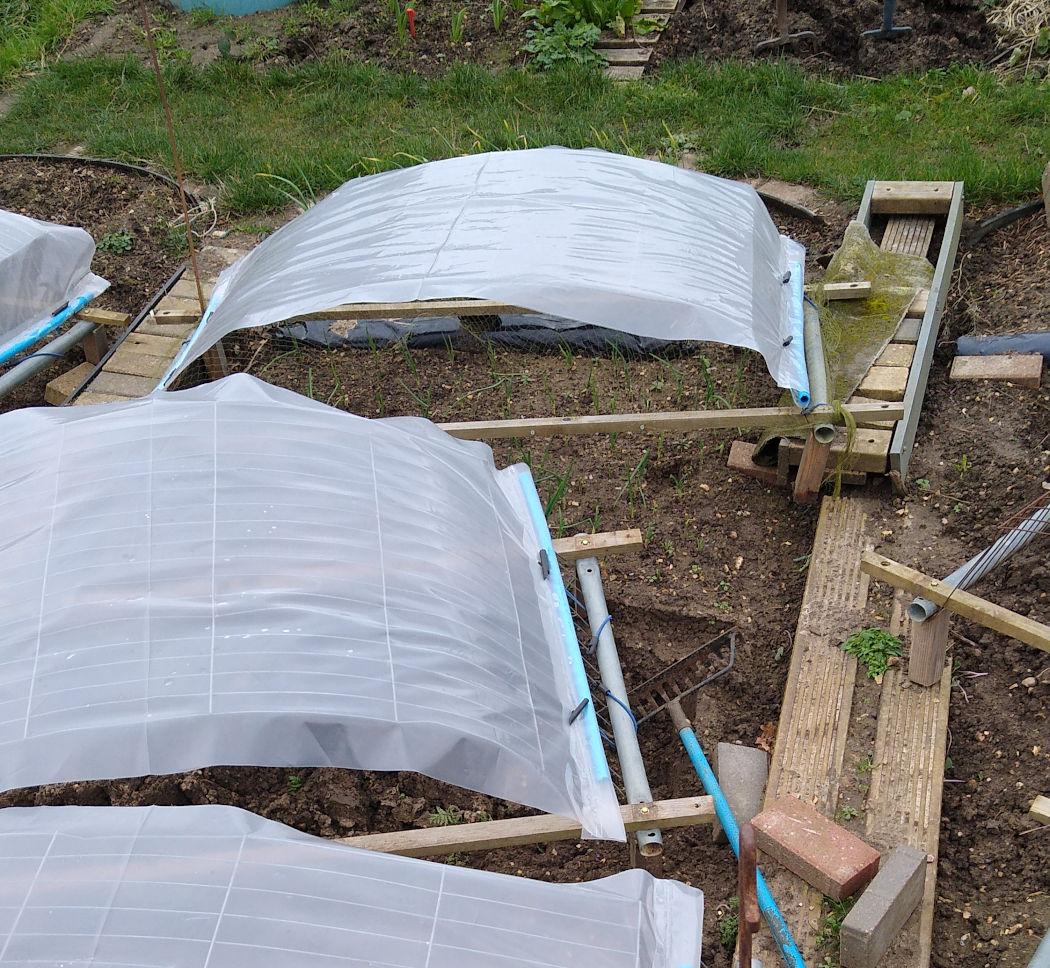This is a design I've been working with the last few years and I think this is the final version.

Design features
+ Funnels the wind across your clump of soil drying it out (warming the soil) Feb to March.
+ Protection & a mini greenhouse for your Sown Outdoors seedlings
+ Perfect size for "Clump" rather than Row sowing
+ On raised pedestal feet (6") so batten wood not dragging in soil
+ Lighter weight design so easily movable & liftable for watering.
+ More durable materials and stronger but simpler construction
+ Lower profile design
+ The Pedestal legs means the structure can be angled from "wind catching" to "sun catching" by pushing the back or front set of legs into soil.
+ Once seedlings are established the "Clunnel" can be angled 90 degrees to act as wind break using long stakes allowing any rainfall to naturally water our hardening young plants
Dimensions
30" inches x 5' ft
Requirements
- 30" Section of Heras panel
- x2 6'(ft) battens (30x19mm)
- x4 TurboScrews long (100mm)
- x4 Pedestel (6") square section wood
* The batten is placed on top of the tube section of the heras panel and the pedestal leg is placed below. A "V" shaped grove is cut in the top of the pedestal. The long turboScrew (self taping) is then driven through the batten - heras tube - into the pedestal, sandwiching the Heras tube section. This creates a sturdy cloche frame that will last a few seasons
** Position the battens as close to the ends of the cut Heras panel tubes as possible to maximise the space available under the "Clunnel"
Design features
+ Funnels the wind across your clump of soil drying it out (warming the soil) Feb to March.
+ Protection & a mini greenhouse for your Sown Outdoors seedlings
+ Perfect size for "Clump" rather than Row sowing
+ On raised pedestal feet (6") so batten wood not dragging in soil
+ Lighter weight design so easily movable & liftable for watering.
+ More durable materials and stronger but simpler construction
+ Lower profile design
+ The Pedestal legs means the structure can be angled from "wind catching" to "sun catching" by pushing the back or front set of legs into soil.
+ Once seedlings are established the "Clunnel" can be angled 90 degrees to act as wind break using long stakes allowing any rainfall to naturally water our hardening young plants
Dimensions
30" inches x 5' ft
Requirements
- 30" Section of Heras panel
- x2 6'(ft) battens (30x19mm)
- x4 TurboScrews long (100mm)
- x4 Pedestel (6") square section wood
* The batten is placed on top of the tube section of the heras panel and the pedestal leg is placed below. A "V" shaped grove is cut in the top of the pedestal. The long turboScrew (self taping) is then driven through the batten - heras tube - into the pedestal, sandwiching the Heras tube section. This creates a sturdy cloche frame that will last a few seasons
** Position the battens as close to the ends of the cut Heras panel tubes as possible to maximise the space available under the "Clunnel"



 a lot of gardeners browse this forum & instead of using plastic,you can get the same result using a bit of scavenged glass on top of a few bricks,it�ll last longer,won�t blow away & wont end up in landfill or the ocean.
a lot of gardeners browse this forum & instead of using plastic,you can get the same result using a bit of scavenged glass on top of a few bricks,it�ll last longer,won�t blow away & wont end up in landfill or the ocean.

Comment